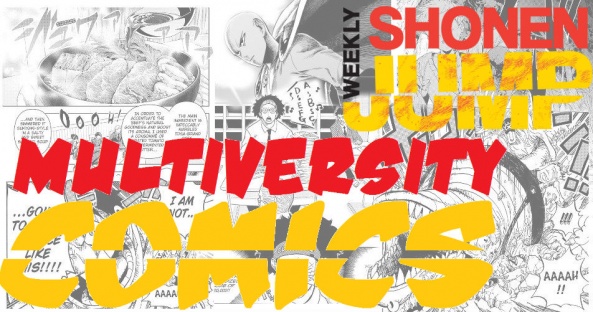
Welcome to This Week in Shonen Jump, our weekly check in on Viz’s various Shonen Jump series. Viz has recently changed their release format, but our format will mostly remain the same. We will still review the newest chapters of one title a week, now with even more options at our disposal. The big change for our readers is that, even without a Shonen Jump subscription, you can read these most recent chapters for free at Viz.com or using their app.
This week, Zach checks in with “Boruto: Naruto Next Generations.” If you have thoughts on this or any other current Shonen Jump titles, please let us know in the comments!

Boruto: Naruto Next Generations Chapter 56
Written by Masashi Kishimoto
Illustrated by Mikio Ikemoto
Translated by Mari Morimoto
Lettered by Snir Aharon
Reviewed by Zach Wilkerson
The latest chapter of “Boruto” kicks off the first new arc in over two years. Following up on the aftermath of the latest fight with the Ohtsutsukis, “Code” is a resetting of the board, in more ways than one. First, this will be the first arc penned solely by series creator Masashi Kishimoto, who took the reins in the final chapters of the “Kawaki” arc. Second, two of the original series protagonists, Naruto and Sasuke, have had a significant reduction in power after their recent battles. While you might expect these developments to have a powerfully emotional impact, that impact is somewhat lessened by other factors.
One of the greatest strengths of “Naruto” was its large cast of characters, each with their own distinct quirks and motivations. “Boruto” has the large cast, though they are mostly holdovers from the original series or carbon copy offspring in the originals. A sequence in this chapter shows Borate’s peers discussing their friend’s current state of mind. However, the scene feels like an afterthought. We’ve seen so little of these characters over the past two years, with the focus primarily shifted to Boruto and Kawaki.
Expectedly, it’s the scenes with this pair that are given the primary focus. However, most of their conversations involve increasingly complicated exposition on the nature of “karma” and the current dilemma of Ohtsusuki resurrection. There’s a sterile, almost detached sense to the narrative and dialogue in this chapter. One of the newest and most interesting characters in the series, Amado, notes that Kawaki was created as a living “scientific ninja tool,” a recurring concept in “Boruto.” This focus and fascination with the scientific bleeds into the tone and dialogue of the story. It’s a rather mechanical affair, devoid of much emotion or urgency.
On a positive note, Ikemoto’s artwork continues to flourish. Most of this issue involves characters talking with one another. Thankfully, Ikemoto’s characters are each vibrantly expressive and unique. The level of detail in his characters and backgrounds are extremely detailed, likely benefiting from the book’s monthly release schedule. Ikemoto gets to go off a bit in the chapter’s climax, crafting a chilling sequence in which the new villain, Code, attacks an offshoot group of Kara. The staging and pacing of the sequence creates a delightful tension as the reader is never quite sure where Code will appear next.
Despite the terrific artwork and the return of Kishimoto, “Boruto” is sorely lacking in some of the magic of its predecessor. The focus on mechanics and machinations could be well supplemented with a bit more introspection, character development, and emotion.
Final Verdict: 5.5 – An unimpressive start to the latest arc of Boruto’s journey.






